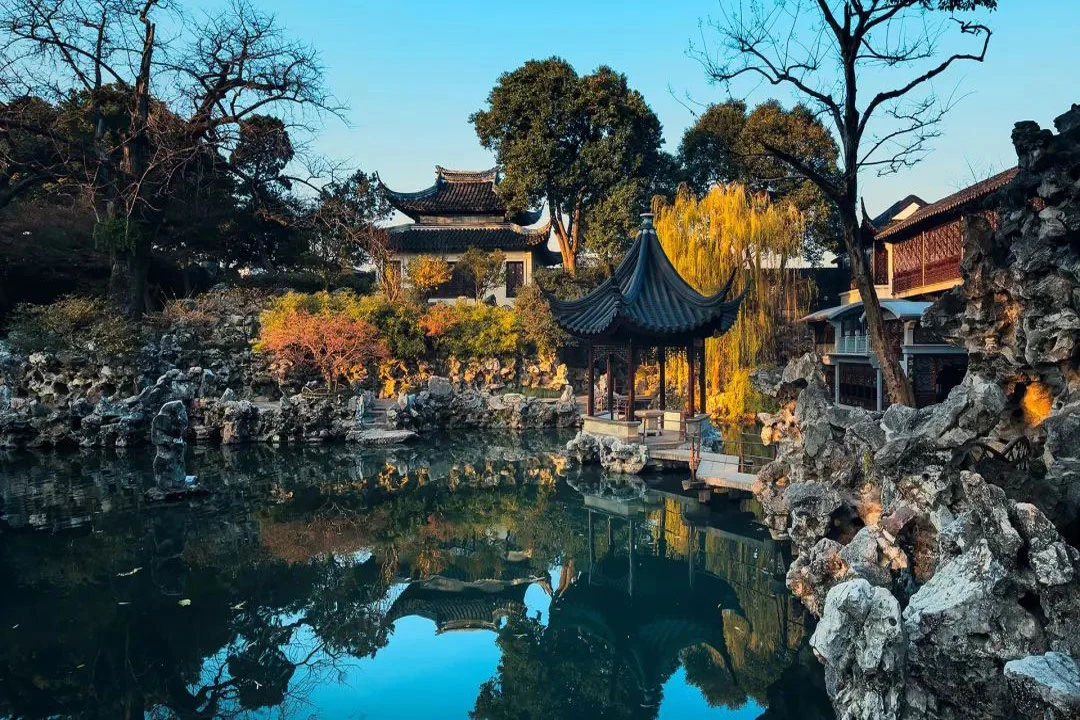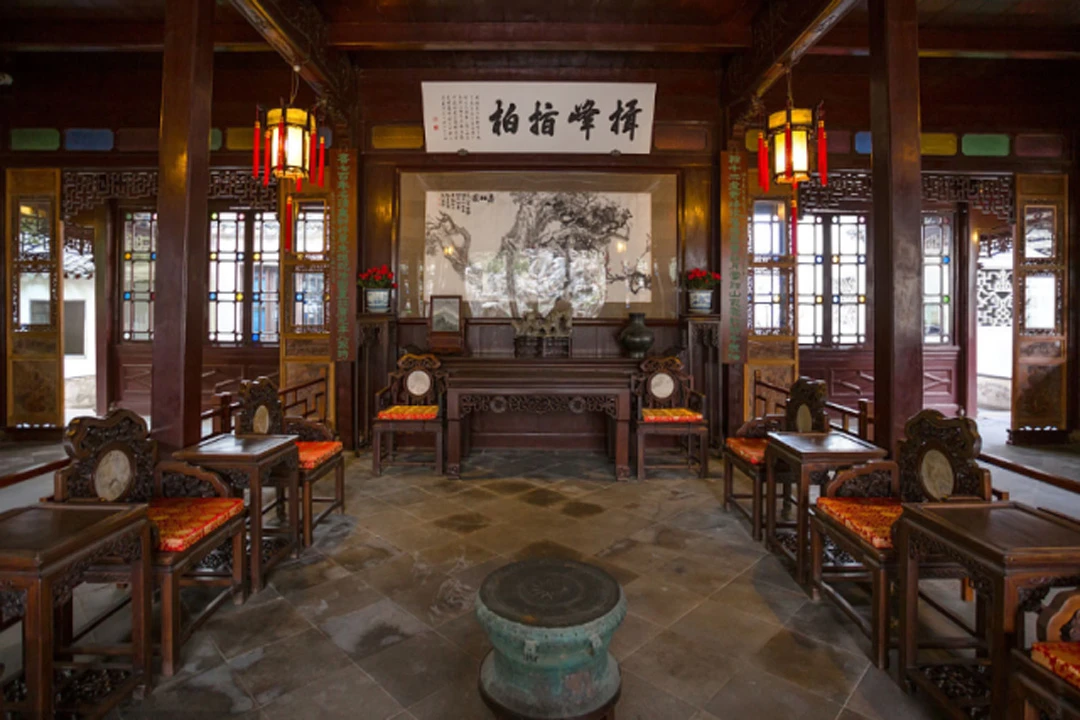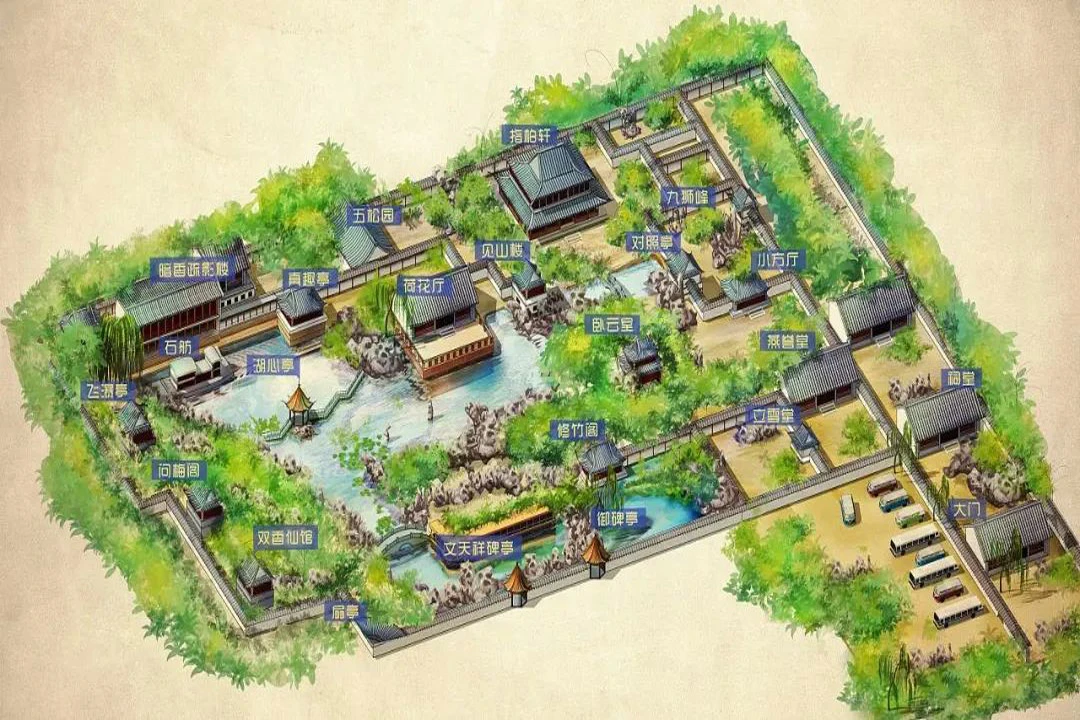Suzhou, a city renowned for its exquisite classical gardens, witnessed a decline in traditional garden construction during the late Qing Dynasty and early Republican era. As the lifestyles of the people evolved and modern building materials gained popularity, Western-style houses, gardens, and parks began to emerge. In 1918, Bei Renyuan (also known as Bei Runsheng), a prominent Suzhou businessman, purchased the Lion Grove Garden for 9,900 silver dollars and undertook extensive renovations.
Bei Runsheng’s most significant contribution to the Lion Grove Garden was his incorporation of advanced building materials and Western decorative styles during the renovation process. He constructed several Western-style buildings within the garden, which not only drew criticism from the cultural and architectural circles of the time but also sparked controversy among experts in the fields of cultural relics, gardens, and aesthetics for many years. The garden was even faced with difficulties when applying for inclusion in the list of national key cultural relic protection units.
In 1998, as the application process for the expansion of Suzhou Classical Gardens as a World Heritage site began, the primary challenge was to further evaluate the historical, artistic, and scientific values of the five candidate gardens, including the Lion Grove Garden, in accordance with international principles and the spirit of the Convention Concerning the Protection of the World Cultural and Natural Heritage. It was essential to gain a comprehensive understanding and scientifically summarize these values.
Just as Rome was not built in a day, it is evident that maintaining a garden that has endured for hundreds of years in its original state is not only impossible but also impractical in terms of building materials, techniques, and styles. As time progresses, the functions of gardens become increasingly diverse, and without change, they are bound to decline. The question arose as to whether the presence of Republican-era architectural elements diminished the value of the Lion Grove Garden.
The outcome of the debate was a preliminary consensus that any building cannot be separated from its specific historical development process. Wearing a Western-style hat with a traditional Chinese long gown may not necessarily be incompatible. The result of the collision of outstanding cultures will lead to exchange and integration. In terms of architectural style and aesthetic ideas, it is necessary to inherit tradition, but it is even more crucial to have continuity and innovation. The Lion Grove Garden is a tangible embodiment of this cultural fusion.
In September of that year, Dr. Henry Cleere and Professor Jukka Jokilehto, world heritage protection experts from UNESCO, visited Suzhou to inspect and guide the protection and management of Suzhou Classical Gardens, a World Cultural Heritage site, and the expansion application project. They were not only internationally renowned architects but also famous cultural heritage protection historians and philosophers of the International Council on Monuments and Sites (ICOMOS), enjoying a high reputation in the industry.
At the Lion Grove Garden, the two experts carefully observed the rockeries from the Yuan Dynasty, ancient trees from the Ming Dynasty, layout from the Qing Dynasty, and new constructions from the Republican era, constantly expressing their admiration. They immediately pointed out that the rockeries in the Lion Grove Garden must have utilized Taihu stones mined during the Song Dynasty! One cannot help but admire the insight of top experts. According to historical records, the Lion Grove Garden was indeed built on the foundation of an abandoned garden from the Song Dynasty.
In China, stained glass windows are also called “flower glass windows.” During the Republican period, foreign diplomats and missionaries widely used colored glass in their buildings. The magnificent and colorful domes and corridor windows became a bright spot in solemn buildings, epitomizing the aesthetics of an era.
When Bei Runsheng renovated the Lion Grove Garden, he installed various types of imported colored glass windows in the buildings throughout the garden. Buildings such as Yanyu Hall, Zhibai Xuan, Shifang, and Wenmei Pavilion all feature colored glass to varying degrees of vividness. Among them, Shifang is the most eye-catching, with 86 colored glass and lattice windows. The Lion Grove Garden boasts the most spectacular glass windows among the Jiangnan gardens.
The buildings such as Shifang, Yifeng Zhibai Xuan, and Anxiang Shuying Lou, constructed with reinforced concrete, cast iron components, colored glass, and mosaic flooring as the main materials, inherit the characteristics of traditional gardens in their appearance, expressing a gentle and peaceful, beautiful and generous style. However, they innovate in decoration, applying the most fashionable materials of the time, fully demonstrating the characteristics of the era and attracting attention.
Most importantly, these building components have remained sturdy and solid for a century, reflecting the highest technical level of Suzhou craftsmen at this historical stage. It is worth mentioning that the floor patterns in the bow of Shifang and the original entrance hall of the Lion Grove Garden (now inside the stone gate at the exit, parallel to the ancestral hall gate) are drawn on simple cement flooring. Despite the dense foot traffic and extremely high intensity of trampling, the patterns remain clearly discernible, which is truly remarkable.
The Lion Grove Garden stands as a testament to the harmonious blend of tradition and modernity, showcasing the evolution of Suzhou’s garden culture through the ages. Its unique amalgamation of Chinese and Western architectural elements, along with the innovative use of modern building materials, has not only enriched the garden’s cultural connotations but also provided valuable insights into the historical development of Suzhou’s craftsmanship and aesthetics.
As we reflect on the significance of the Lion Grove Garden in the context of Suzhou’s classical garden heritage, it becomes clear that the garden’s value lies not in its adherence to a single, static ideal, but rather in its ability to adapt and evolve with the changing times. The incorporation of Republican-era architectural elements, far from diminishing the garden’s worth, adds depth and complexity to its narrative, making it a living embodiment of Suzhou’s cultural history.
The story of the Garden also highlights the crucial role that individuals can play in shaping the course of cultural history. Bei Runsheng’s vision and dedication to the garden’s renovation, despite the criticisms and controversies it initially faced, have left an indelible mark on Suzhou’s landscape and have contributed to the city’s rich tapestry of cultural heritage.
As we move forward in our efforts to protect and promote cultural heritage sites around the world, the example of the Garden offers valuable lessons and inspiration. It reminds us of the importance of embracing change and innovation, while remaining rooted in the traditions and values that define our cultural identities. It also underscores the need for open-mindedness and a willingness to engage in dialogue and exchange, both within our own communities and with the wider world.
In conclusion, the Lion Grove Garden is a remarkable testament to the resilience and adaptability of Suzhou’s classical garden tradition. Its unique blend of styles, materials, and cultural influences has not only enriched the city’s cultural landscape but has also contributed to our understanding of the complex and dynamic nature of cultural heritage. As we continue to explore and appreciate the beauty and significance of Suzhou’s gardens, let us also remember the important lessons that the Garden has to offer, and let us strive to create a future in which cultural diversity and innovation are celebrated and sustained for generations to come.



